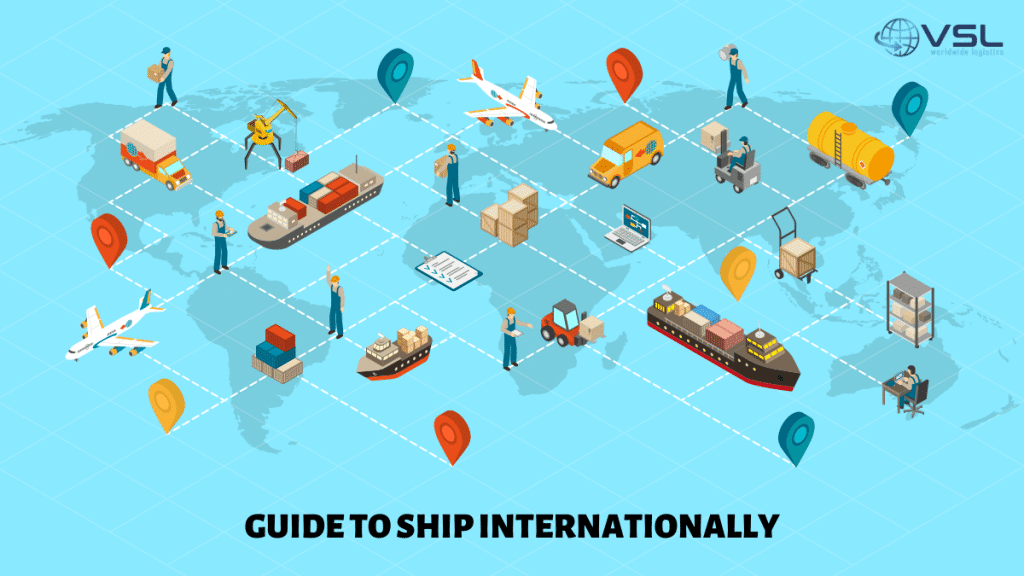Growing businesses across the globe, sales growth, global purchases or expanding your e-commerce is progress towards business development. Business beyond border means you need to work out on your logistics and international shipping cautiously.
When it comes to International shipping we need to take care of a few formalities which can further help to smoothen the entire procedure. If not, then it can lead to unnecessary and lengthy procedures that can be really painstaking. Moreso it is important to find out what strategy works for you and your business. Many factors determine which types of commodities may be shipped across a country’s borders and who can receive certain types of shipments.
When you prepare to be global Let’s find out what are the steps we need to follow which can really ease the process of international shipping.
The Customs Invoice
Shipping beyond the EU or beyond the borders falls under international shipping and so the most important document is the Customs Invoice. The customs authority of each country regulates the flow of goods through shipment. It is essential and mandatory to get a clearance for any parcel going to or from a non-EU country.
A customs invoice is a document that gives details and other information about the parcel which goes along with the parcel. No shipment happens without this document. A customs invoice will include the following details like
- Collection address
- Delivery address
- A Summarised Goods description
- Total Shipment Value
- Tax Status of the receiver
- The reason for the export
- Country of manufacture
- Declaration statement
- Itemized goods description
- Itemized value for each item in the parcel
Gather Important Information
It is important to make sure about filling up the customs documents but before that prepare yourself and make sure you gather the information for a list of questions mentioned below:
- What is the purpose of your shipment?
- What are your shipping -documents, goods, or commodity?
- What’s the value of your parcel?
- Purpose of your shipment if any?
- What is the origin of the country the goods were from? (manufacture)
- What’s your commodity code? Is it in the Harmonized System?
- Who is the receiver?
- Who is going to pay the transportation charges, duties, and taxes?
Customs Restrictions
Every country has its own rules and regulations laid down for shipment, parcels. It’s advisable to visit the official customs website for the countries you’d like to ship to and take a look at the prohibited and restricted items. There is a prohibition on sending certain kinds of goods, restriction to accepting parcels and this depends on country to country.
It would be very stressful if at any point the parcel is returned back, rejected because of breaking customs authority rules. Respecting the laws and abiding by the rules, it is very important to note and first have a clear understanding of the prohibitions of the receiving country before sending anything.
Import Duty and Tax
It goes without saying that any parcel outside the EU will attract tax and duty. Import duty and tax are applied to packages as they arrive in the country and are normally paid by the recipient of your parcel. Have a clear understanding of the import duty and tax before packing.
For all, you know some items may be exempt as well. But you should be aware of this and remember its the customs authority who levy these charges and not the courier company. As every product has a commodity code also known as the Customs Tariff code. And these will differ from country to country. So be well informed and do your initial check wisely.
These links can help get more information on tariff codes
https://trade.ec.europa.eu/tradehelp/eu-product-classification-system
https://www.export.gov/article?id=European-Union-Customs-Regulations
Tracking Your Parcel
Tracking the parcel sent is yet another important aspect of international shipping as it deals with crossing borders and entering a different country. It becomes necessary to see whats the progress or status of the parcel sent. Has it been shipped, where has it reached, is there a delay in shipment. To build trust with overseas customers, choosing a shipping solution that provides end-to-end tracking for your package allows them to closely monitor their parcel while reducing the risk of loss.
With the GPS satellite and constant monitoring, we know the status and movement of the consignment. Track the progress of your parcel through the online satellite real-time tracking system.
Packaging Your Parcel
All’s well if it is begun well. So how has the packaging been handled? As the parcel moves from different places and locations until it finally reaches its destination, it is handled at various levels of checking so we have to ensure that our parcel is well packaged using good quality packaging material which ensures the safety of the goods inside.
A high-quality corrugated cardboard box is the best for outer safety. Still have a question of doubt. Review our tips on how to pack and follow our detailed guidelines to ensure the best results in our previous blog – From Packaging to Parcel: Tips to Help You
Choose VSL worldwide logistics as your solution for domestic and international shipping. ‘Anytime, Anywhere, Anysize, Any weight – Logistics & Freight forwarding solutions’. Visit our site vslworldwide.com to know more about us and our services.
With VSL at your service, we assure you ‘We just Don’t Deliver A Parcel, We Deliver An Experience’.






